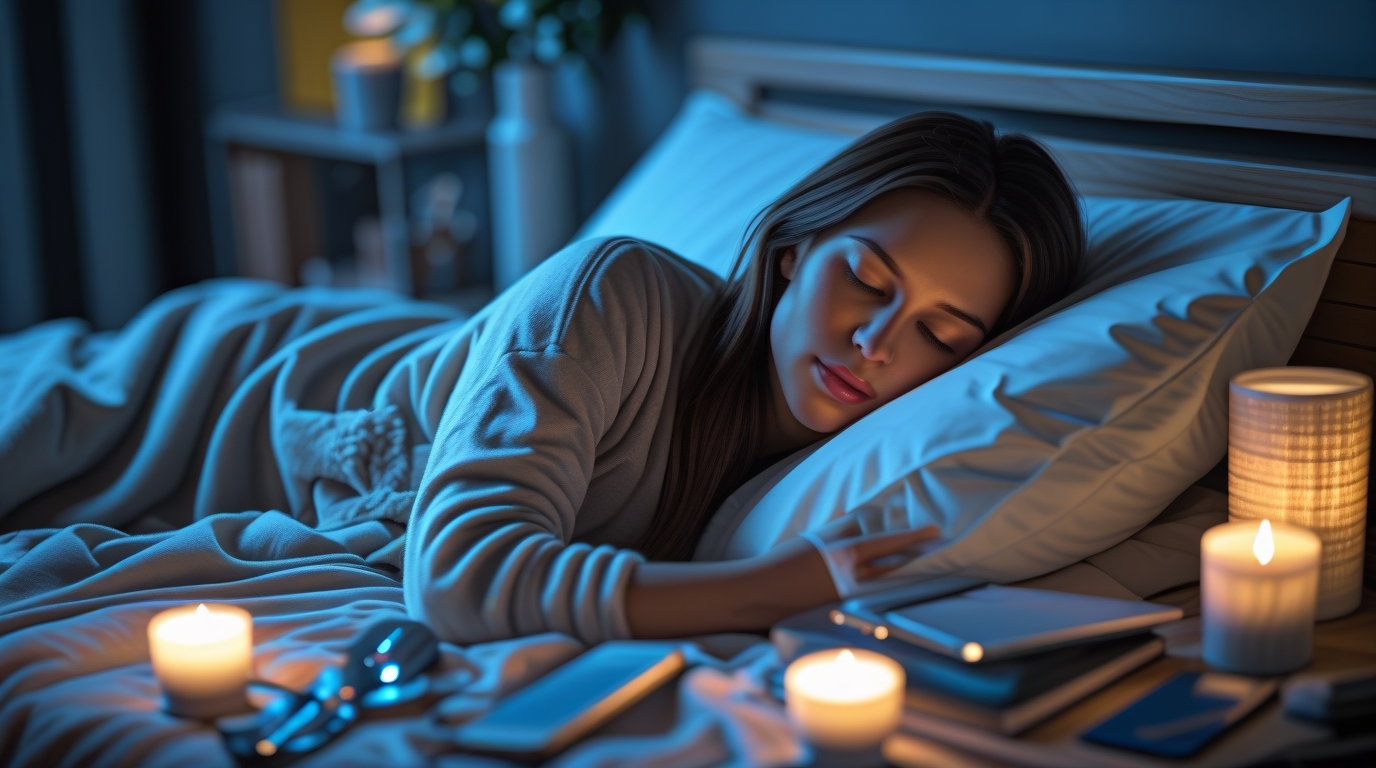Are you struggling to fall asleep at night? You’re not alone. Many people find themselves tossing and turning, battling insomnia, or simply unable to quiet their minds. A well-thought-out night routine might be the solution to your sleep woes. In this article, we’ll explore night routine ideas that help you sleep faster, enhancing the quality of your nightly rest. Embracing these routines is not just about falling asleep quickly but also about improving overall sleep quality, which boosts physical health, emotional well-being, and mental clarity.
Understanding the Importance of a Night Routine
Before delving into specific night routine ideas, it’s essential to understand why these routines are crucial. A consistent night routine signals to your body that it’s time to wind down, helping transition from the hustle-bustle of daily life into a restful state. By creating and maintaining a dedicated schedule, you train your body to enter a relaxation mode, leading to faster, more efficient sleep cycles.
The Science Behind Sleep
Our bodies operate on a circadian rhythm—a natural, internal process that regulates the sleep-wake cycle roughly every 24 hours. Light and darkness significantly influence this cycle. By establishing a regular pre-sleep routine, you align your body’s internal clock, promoting better sleep.
Benefits of a Consistent Night Routine
A structured night routine not only aids in falling asleep faster but also contributes to improved sleep quality. This means a deeper and more restorative sleep, leading to increased energy levels, improved mood, and enhanced cognitive function the following day.
Essential Steps for a Calming Night Routine
Create a Relaxing Sleep Environment
The environment you create around you has a significant impact on your sleep quality. A peaceful, inviting bedroom serves as the foundation of a good night’s rest.
- Dim the Lights: Begin reducing your exposure to bright lights at least an hour before bed. This helps increase the secretion of melatonin, the sleep hormone.
- Keep Your Room Cool: Studies show that a cooler room temperature, around 60-67°F (15-19°C), is conducive to better sleep.
- Minimize Noise: Consider using a white noise machine or earplugs if you’re sensitive to environmental noises.
Limit Screen Time
Electronic devices emit a type of blue light that interferes with melatonin production, making it difficult to fall asleep.
- Try a “digital sunset,” shutting off all screens—phones, tablets, computers—at least an hour before bed.
- If reducing screen time is challenging, use blue light blocking glasses or enable night mode on your devices.
Practice Mindfulness and Relaxation Techniques
Unwinding your mind is as crucial as relaxing your body. Mindfulness practices can significantly enhance this process.
- Deep Breathing Exercises: Simple breathing techniques can help calm your mind and body. Focus on slow, deep breaths to lower your heart rate and induce relaxation.
- Engage in Guided Meditation or Use Relaxation Apps: Apps like Calm or Headspace offer excellent resources to facilitate meditation.
- Progressive Muscle Relaxation: Gently tense and then relax each muscle group, starting from your toes and moving upwards to release physical tension.
Nutritional Considerations for Better Sleep
Timing and Choice of Evening Snacks
What and when you eat can influence your sleep quality. Opt for light and healthy evening snacks to promote better sleep.
- Choose Sleep-Inducing Foods: Consuming foods rich in tryptophan or magnesium, like turkey, almonds, and bananas, can promote sleep.
- Avoid Caffeine and Sugar: These substances are stimulants and can keep you awake longer than intended.
- Include Herbal Teas: Consider sipping on chamomile or peppermint tea to enhance relaxation.
Stay Hydrated
Staying hydrated is crucial throughout the day for overall health but limit liquid intake right before bed to avoid disruptively frequent bathroom trips during the night.
Establishing Regular Exercise and Sleep Schedule
Importance of Daytime Physical Activity
Regular physical activity, especially when done earlier in the day, can significantly improve sleep quality and duration.
- Engage in Moderate Exercise: Activities like brisk walking, cycling, or yoga a few hours before bedtime boost sleep-inducing hormones.
- Avoid Intensive Workouts Just Before Bed: Strenuous physical activity right before bedtime can lead to difficulty falling asleep.
Sticking to a Sleep Schedule
The human body thrives on routine. Keeping a consistent schedule reinforces your body’s circadian rhythm.
- Go to Bed and Wake Up at the Same Time: This consistency, even on weekends, aids in stabilizing the internal body clock.
- Create a Pre-Bedtime Ritual: Engage in a soothing routine such as reading a book or listening to calming music before bed.
Additional Tips and Tricks for Falling Asleep Faster
Incorporate Aromatherapy
Scents such as lavender have calming effects on the mind and body. An aromatherapy diffuser can help disperse relaxing scents in your bedroom.
Explore Cognitive Behavioral Therapy for Insomnia (CBT-I)
For chronic sleep difficulties, CBT-I is a structured program that helps you address any thoughts or fears that are keeping you awake.
Interested in learning more about how to enhance your sleep through environmental adjustments? Check out our article on Creating a Sleep-Friendly Bedroom. You might also find our post on Benefits of Guided Meditation for Sleep insightful.
Conclusion
Incorporating a calming night routine into your daily life can have profound benefits not just on your sleep but on your overall well-being. By making small yet significant adjustments to your nightly habits, you can enjoy faster sleep onset and higher quality rest. Remember, consistency is key, and over time, your body will naturally respond to these cues, transforming your nights from restless to restful.
We’d love to hear from you about your night routine! Share your experiences or tips in the comments below, and don’t forget to subscribe for more insights and updates on leading a healthier lifestyle.


Leave a Comment